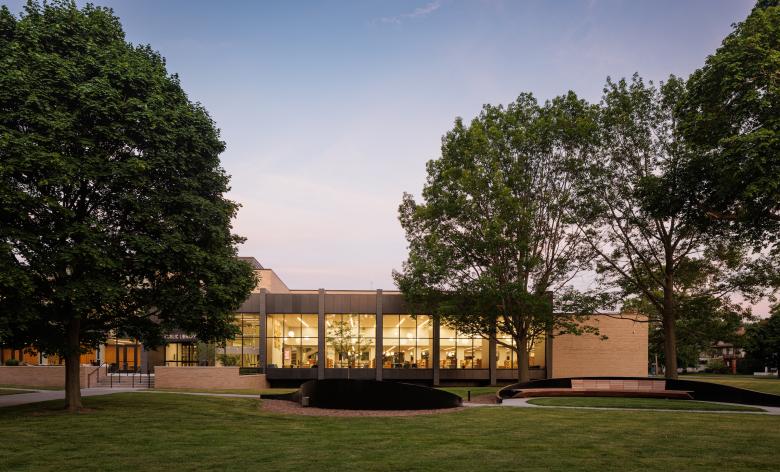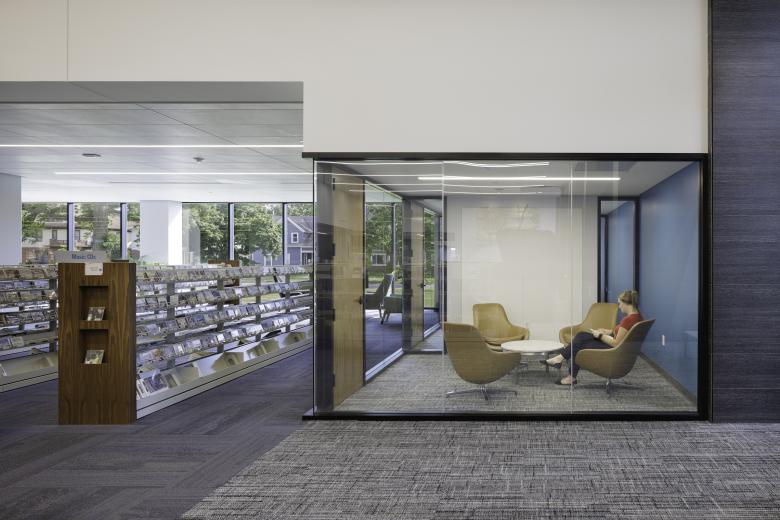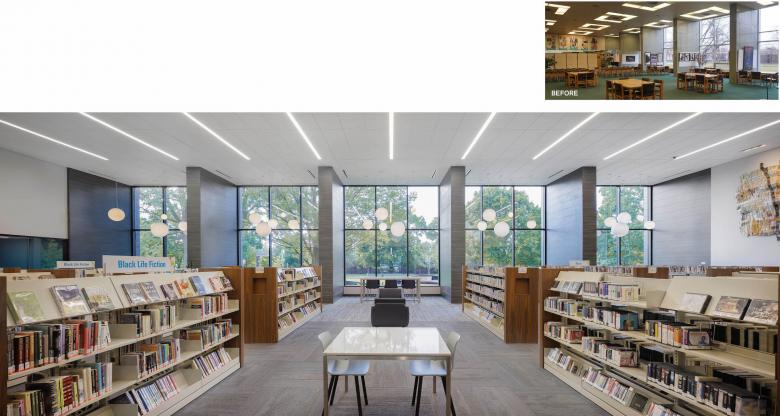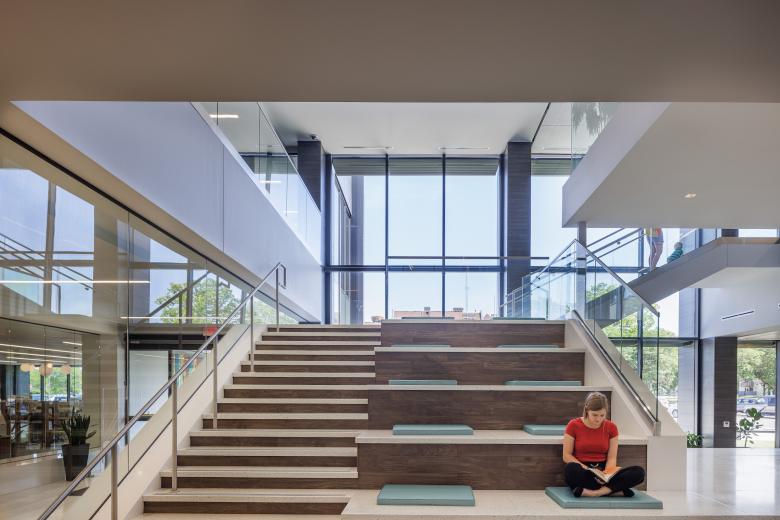US Building of the Week
Flint Public Library
OPN Architects
4. setembro 2023
Photo: Alex Michl, OPN Architects
In 2019, voters in Flint, Michigan, northwest of Detroit, approved a bond for the renovation of its then 61-year-old library. Two and a half years later, in May 2022, the renovated Flint Public Library opened to the public with much fanfare. OPN Architects answered a few questions about the project.
Location: Flint, Michigan, USA
Client: Flint Public Library
Architect: OPN Architects
- Design Principal: Toby Olsen, AIA
- Project Architect/Manager: Elisha Horsfall, AIA
- Project Team: Mindy Sorg (senior interior designer), Jacob Cournoyer (designer), Erica Steapp (interior designer)
MEP/FP Engineer: IMEG Engineering
Landscape Architect: OPN Architects
Lighting Designer: IMEG Engineering/OPN Architects
Interior Designer: OPN Architects
Construction Manager: Clark Construction Company
Site Area: 2.83 Acres
Building Area: 91,250 sf
Photo: Alex Michl, OPN Architects
Please provide an overview of the project.After decades of economic challenges, a local water crisis that gained national attention could have brought a community to its knees. Instead, the community of Flint, Michigan, chose to look to the future. Under the banner of #FlintForward, civic leaders and community members continue to champion for their city and each other. The transformation of the Flint Public Library is a symbol of that resiliency. In reusing the existing building, the community made the most sustainable choice possible.
Photo: Alex Michl, OPN Architects
What are the main ideas and inspirations influencing the design of the building?In the face of adversity, a public library in a community struggling with systemic socio-economic and social divides sought to transform, renew, revitalize, and reinvent its 1950s building into a modern and flexible beacon for learning and hope. The library was remade from the inside out, transforming it into an equitable, confident, and aspirational place both for and of its community. While maintaining the original footprint of the building, the 94,000-square-foot interior was reconfigured to include new openings between the first and second floors. The improved floor plan also reclaimed 16,000 square feet of underutilized space, pulling staff offices away from the exterior walls, and relocating these functions along with historic archives to the lower level. Now, the new layout leverages expanses along exterior walls. The redesigned floor plan also placed quiet reading areas and meeting rooms of various sizes around the building’s perimeter, creating day-lit spaces that can accommodate formal meetings, community groups, and more intimate informal discussions. A modern, retail-centric service model removes the traditional circulation desk, creating opportunities for staff and visitor interactions throughout the first-floor collection areas. The once dark and dated regional reference library is now a flexible, community-focused, and light-filled space with improved wayfinding and visual connections throughout.
Photo: Alex Michl, OPN Architects
How does the design respond to the unique qualities of the site?Flint Public Library sits on the edge of Flint’s Cultural Campus. Like the library, the rest of the buildings on the campus were built during the 1950s and reflect that era’s architectural heritage. The renovation of the library maintains the mid-century aesthetic and respects the surrounding vernacular while also physically manifesting the community’s commitment to moving forward and redefining itself for the future through modern updates. Windows were added and replaced and exterior architectural fins, both new and those existing which were re-clad, reflect the surrounding mid-century buildings that comprise the cultural campus on which the library sits. The site’s existing green space was maintained, and outdoor programming space was created to foster use of outdoor spaces. There is now a courtyard with seating and an expansive views, curved conversation benches, and a mural full of story book characters by a local muralist.
Photo: Alex Michl, OPN Architects
How did the project change between the initial design stage and the completion of the building?The design of the Flint Public Library engaged the community through focus groups with stakeholders as well as community-wide open houses, all of which affected the final design solutions. For example, the community repeatedly voiced the need for meeting rooms of various sizes. As a result, the library program has 10,000 sf of meeting space. This not only meets a need, but also creates a physical space for a community that has at times been divided to come together.
Photo: Alex Michl, OPN Architects
Was the project influenced by any trends in energy-conservation, construction, or design?As the community continues to recover from a well-known water crisis, library leadership was committee to including a reverse water filtration system that would ensure access to safe water. All new systems replaced those past their lifespan. Additional insultation on the roof and exterior walls and the installation of all new high-performance glazing and thermally broken curtain wall systems both serve to improve the building’s energy usage and daylight harvesting reduces energy loading. The heating and cooling system employed is a Variable Refrigerant Flow (VRF) system and the building was provided with a building automation system (BAS) to control equipment efficiently and monitor functions. By reusing an existing building, the library and design team were able to make the most sustainable choice possible. The reused building represents a significant amount of embodied carbon.
Email interview conducted by John Hill.











